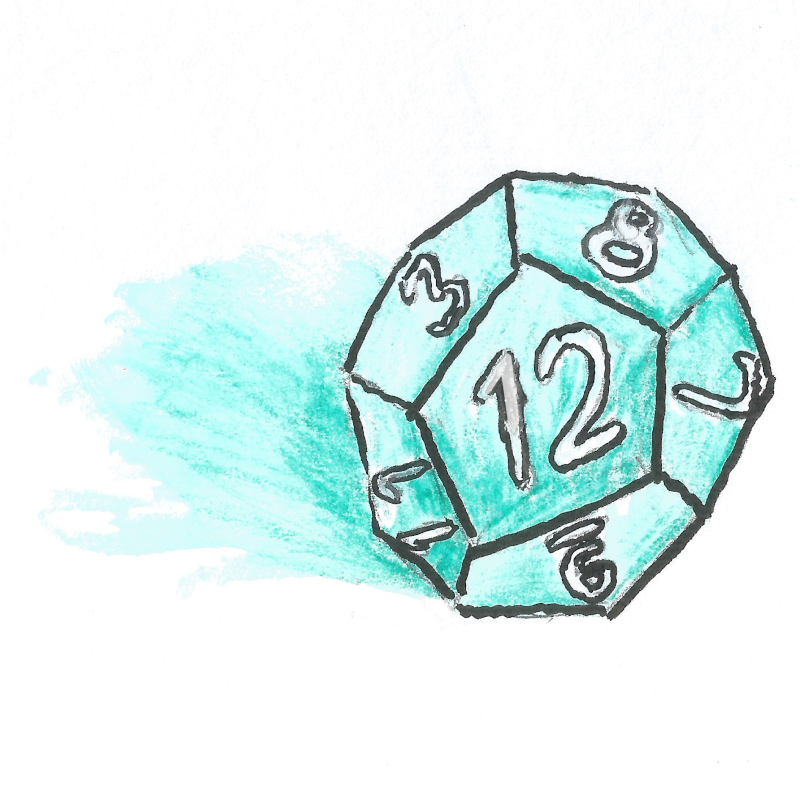When you’re planning a TTRPG game—whether you’re creating your own world or adapting someone else’s work—having interesting factions can make the world feel more complex. In this series, I’m working through a lot of the ideas I’ve stumbled into about building factions in the games I’ve run the last few years.
Let’s start with the core principle: a faction generally shouldn’t be easily categorized as the “Good Guys” or “Bad Guys.”
This isn’t an absolute rule. Sometimes it’s fun to have an obvious, predictable faction that follows a trope. Not everything needs to be a fake-out or descend into complicated moral theory. The world is complicated enough; sometimes it’s nice to play a game where things are black-and-white.
But the most rewarding GM moments are when players add meaning to your world that you didn’t intend. To do that, you have to give them space. Labeling factions and NPCs as simply “good” or “bad” can crowd out player meaning-making.
This doesn’t mean creating a gray area full of edgy antiheroes; it means writing characters without applying any intrinsic labels. (As an added bonus, I think this creates more realism, because that’s how life works.)
It’s tough to get in this headspace. Culturally, we like black-and-white lenses. Good Guys can always be trusted no matter who you are, and are always trying to do the right thing for its own sake. They might have slight failings but nothing serious. Bad Guys can barely take neutral action via accident or compulsion, much less do good.
When that black-and-white lens fails, we tend to fall into “both sides bad” thinking. If you can’t put people cleanly into the good or bad column, they might as well be the same. There’s an aspect of moral purity here—if I have to choose between multiple imperfect options, then I’m sullied by the choice. The only way to keep my purity is to refuse the choice entirely.
Avoiding choices makes for a boring story. Interesting TTRPG stories are often created by forcing players to make a choice they have to discuss. So, as gamemasters, we have to shelve these two mindsets and avoid putting our factions and NPCs in tidy boxes. To do that, we need to loosen our grip on what makes a character “good” or “bad.”
This isn’t to say there is no distinction between right and wrong, good and bad—that it’s everyone’s personal choice. I would strongly disagree with that position myself!
Instead, factions and their philosophies tend to interact more with personal preferences than right and wrong. Whether a faction chooses to murder its enemies might be an absolute moral choice, but how it draws its org chart is mostly a matter of preference.
There are several axes you can use to categorize these factions, and everyone has their own idea of what counts as “good” on a particular axis:
- Highly structured or chaotic?
- Petty or earnest?
- Friendly or threatening?
- Careful or action-oriented?
- Efficient or bureaucratic?
- Preserving stability or sticking it to the man?
- Self-policing or lenient?
I’m sure you can think of more. Ask yourself how your faction would operate in a given situation, what it wants, what tradeoffs it’s willing to make. Importantly, try to define your axes such that there isn’t a good and bad choice, but choices that feel good, bad, or neutral depending on your preferences. Then, layer in multiple axes so that players have to prioritize. The gamemaster might personally disagree with where a player’s character falls on these axes, but the fact that they’re making a choice about the world is good for gameplay.
Culturally, we often lump these axes together. For a example, an effective faction must also be earnest and friendly or we might assume they’re just going through the motions. Sometimes one axis does imply another, and it’s unrealistic to play too much with traits that don’t naturally fit together. But there’s no reason a large enough faction has to fit perfectly into these expectations. (In the next post, we’ll talk about how to accomplish that.)
